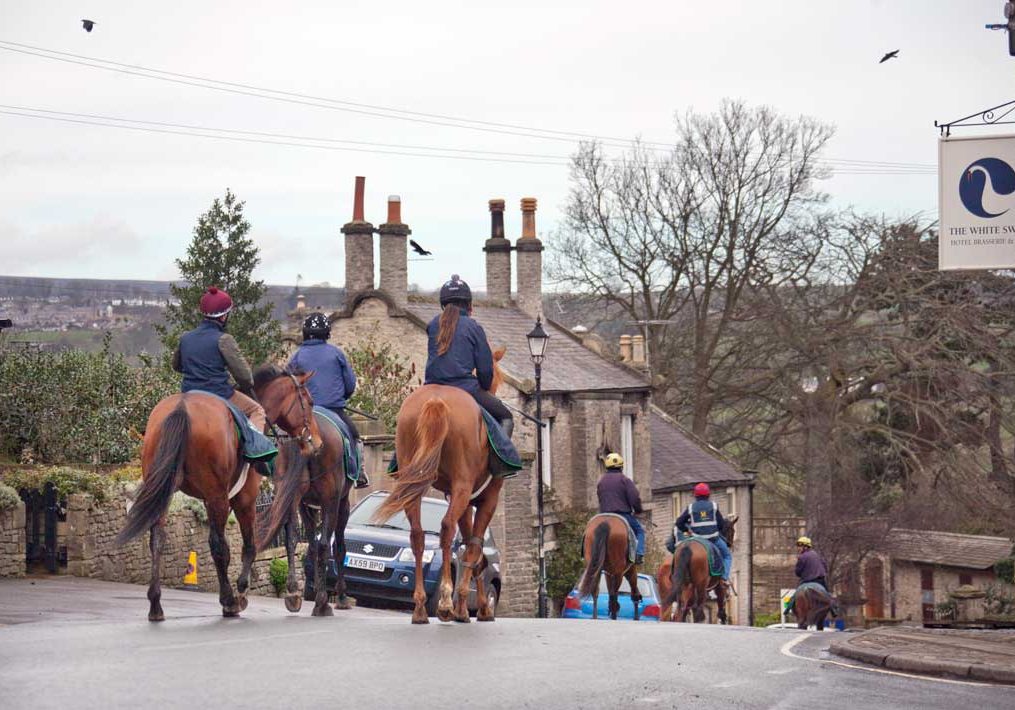
We visit the beautiful village of Middleham to discover its hidden secrets
by Christa Ackroyd
It is said there are more racehorses than people in Middleham
Once the home of kings… now home to the sport of kings.” That’s how Sir Gary Verity describes the ancient market town of Middleham. And he should know. The head of the acclaimed tourist body Welcome to Yorkshire and knighted for his services to the county, Sir Gary lives a stone’s throw from Middleham in a beautiful farmhouse where he raises rare breed sheep amid the stunning unchanged landscape as the perfect antidote to the pressures of bringing the beauty of Yorkshire to the world.
And Middleham is a rare jewel in the Yorkshire tourism crown both for its stunning setting in the Dales and its history.
Today it is home to some of the best racing yards in the country. Fifteen trainers are based here including Mark Johnston, Jedd O’Keefe, James Bethell and Ben Haslem and racing is the biggest employer in the town. In fact it is said there are more racehorses than people in Middleham which has less than a thousand inhabitants and visitors can enjoy the sight and sound of scores of race horses clip clopping along the ancient streets daily as they make their way to the training gallops on moorland on the edge of the town, as they have done for hundreds of years.
The first documented trainer at Middleham was jockey Isaac Cape in 1733 although Cistercian monks at nearby Jervaulx Abbey were breeding horses long before. It has been home to the winners of numerous classics and boasts three Grand National victories from the famous Warwick House Stables run by Captain Neville Crump, Sheila’s Cottage, Teal and Merryman the Second if anyone remembers a successful bet on them.
Today the town produces more than 400 winners each year and for those who want a behind the scenes look at the work that goes into training those winners, many of the famous yards open their doors on Easter Monday with all proceeds going towards Racing Welfare and the Yorkshire Air Ambulance. Private tours of this thriving hub of the sport
of kings can also be arranged through middlehamracingbreaks.co.uk.
Middleham is also at the heart of another major charitable endeavour with plans for a one million pound centre for all those who work in the racing industry funded by the Jessica Bethell Foundation in memory of the charismatic daughter of trainer James Bethell and his wife Sally. Jessica tragically died from meningitis in 2012 and the foundation supported
by HRH Princess Anne have identified a need to provide support for the many young people who are drawn to Middleham from all over the world from stable lads and lasses to grooms and jockeys.
If racing is the number one employer then tourism is the second. The first known settlement at Middleham was established during Roman times and William the Conqueror granted the land around the town to his Breton second cousin Alan Rufus who built the first castle there.
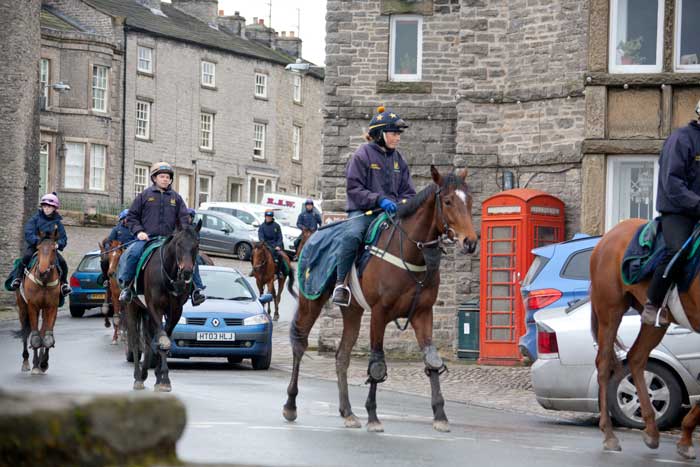
Credit: Mark Davis
It is the later and more famous castle, the ruins of which currently dominate the town that fascinates historians and tourists today. Work started on the massive project in 1190 and it was to be dubbed the Windsor of the North. It was here that the castle’s owner, Richard Neville to become known as The Kingmaker, invited his 13 year old cousin, Richard Duke of Gloucester (later Richard III) to come and learn the skills of knighthood. Richard later married Warwick’s daughter Anne Neville in 1472 and it is where their son Edward was born and died. King Richard himself was famously killed in August 1485 at the Battle of Bosworth which saw an end to the bitter and bloody War of the Roses. The House of York had been defeated by the rival House of Lancaster and Henry became the first Tudor king. Richard was in fact the last reigning King to die in battle. An entry in York City Council records proclaimed the day after Bosworth ‘King Richard late mercifully reigning over us was slain and murdered to the heaviness of this city‘ and the House of York was no more.
Today the castle is an impressive dominant ruin with the exception of the existence of the keep, chapel and gatehouse and run by English Heritage having been gifted to the state in 1930 by its last private owners the Cunliffe Listers, of nearby Swinton Castle. But it’s most famous resident; the King of England is still celebrated. Every year on the anniversary of his death a requiem mass is performed in Richard’s honour. And Middleham’s church has perhaps the most fascinating name in the whole of the Dales.
St Mary’s and St Alkelda was named after a Christian Saxon Princess. Legend has it Alkelda was murdered by two Danish women in 800 AD when the Danes were ravaging the far north of England destroying holy places. It is said that her bones were buried under part of the present church and indeed human remains were found during restoration work on the 19th century building and were re buried in the South Knave. An alternative and less romantic version of the name could have been derived from hal keld or Holy Well but we prefer the idea of a Saxon princess whose early Christian beliefs cost her life.
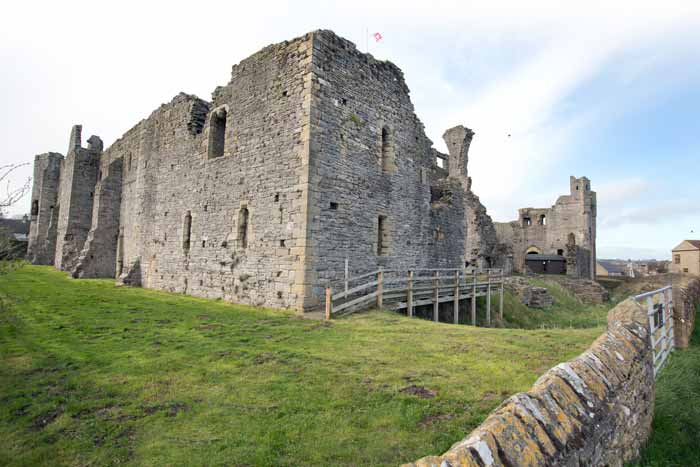
Middleham Castle. Credit: Mark Davis
At the back of the church visitors can gaze upon a replica of the Middleham Jewel, a rare and
wonderful find by a metal detecting enthusiast who one day in 1985 unearthed what he thought was an old compact. Instead after cleaning it was revealed to be a gold pendant with a ten carat blue sapphire dating back to the days of the King. Some say it was a charm against sickness others a receptacle for holding a religious relic possibly even wood from the cross. Either way it was judged not to be Treasure Trove and sold for 1.3 million. The original is now housed in the Yorkshire Museum in York.
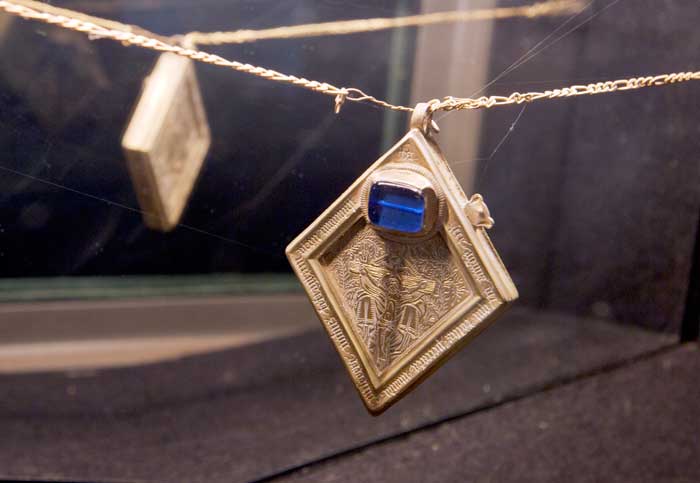
The Middleham Jewel
Men and women with metal detectors still roam the moors looking for treasure and they haven’t been disappointed. The largest hoard of silver coins from the English Civil War was found here, more than five thousand contained in three pots. A livery badge belonging to one of Richard’s servants bearing his emblem of a white boar has also been unearthed and the Middleham Ring inscribed with the word Sovereynly is now proudly displayed in the Yorkshire Museum. Add to that the discovery of a rare casket plaque bearing the initials R and A and the French motto A Vo Plaisir (For your Pleasure) believed to be a gift from the King to his wife and it’s no wonder they keep coming back!
The town produces more than 400 winners each year
Another wonderful piece of history relating to matters religious refers to the ancient Deanery of Middleham. An honourary title the last Canon was one of literatures most famous socialist authors of the beloved fairy tale, The Water Babies, in which the beauty of the Dales countryside and its inviting waters is featured as an imaginary antidote to the horrors of the world of the children forced to sweep chimneys in the South. Although a native of Devon and
Canon of Westminster, Charles Kingsley fell in love with the stunning countryside around Middleham as indeed did landscape artist, Turner who famously painted the spot where the Cover meets the Ure.
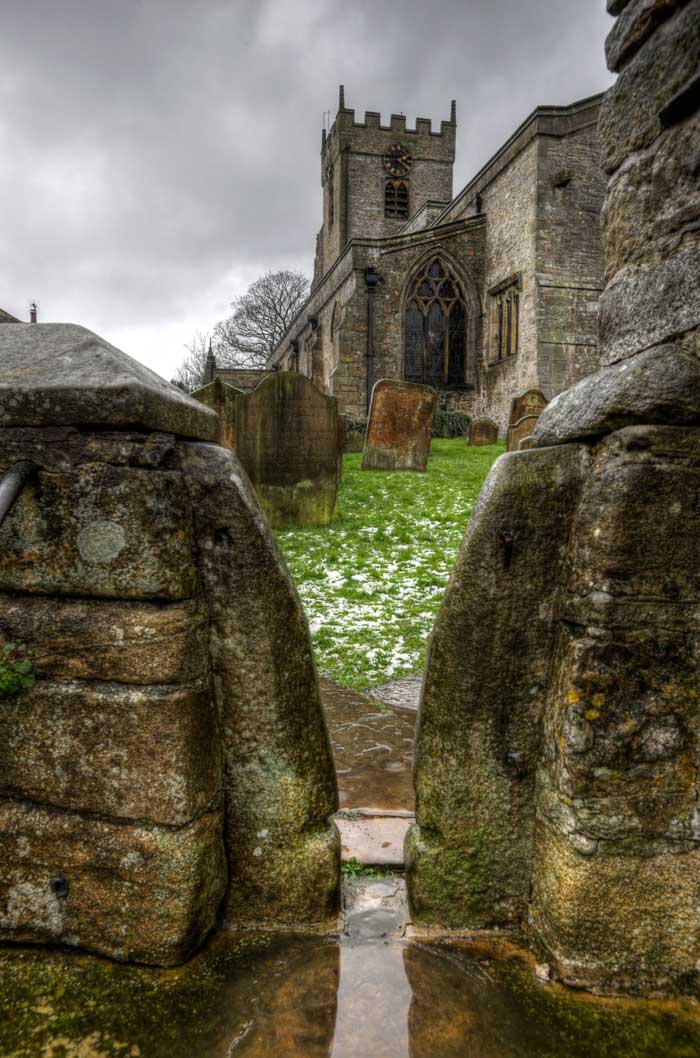
The Church of St Mary and St Alkelda, Middleham. Credit: Mark Davis
It was that same landscape untouched by time and industry which prompted Colin Armstrong to begin work on his private folly which became The Forbidden Corner. From a simple wooded windbreak grew a viewing area to take in the spectacular far reaches of the Cover Valley. Persuaded to open this stunning corner of the Yorkshire Dales to the public, the eccentric labyrinth of tunnels, chambers mazes, towers and grottos now attracts hundreds of thousands of visitors each year and has been crowned Large Visitor Attraction of the Year in 2015 at the prestigious White Rose Awards.
Middleham and its surrounding towns and villages are well served with a host of fine dining experiences from cosy country pubs to award winning restaurants. It also boasts a wide range of excellent accommodation to cope with the growing demand from visitors. Indeed this secret, often hidden part of the Dales, is a secret no more.




